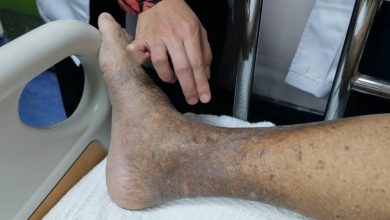Kleptomania Causes, Symptoms, Diagnosis and Treatment

What Is Kleptomania?
Kleptomania, classified as an impulse control disorder, is the recurrent failure to resist urges to steal items and is done for reasons other than personal use or financial gain.
If left untreated, kleptomania can cause emotional pain to the individual and his/her loved ones.
Causes Of Kleptomania:
The definite cause of kleptomania is yet unknown.
However, some explanations have been proposed. Kleptomania may be:
- Linked to problems with serotonin which helps in regulating moods and emotions. Low levels of serotonin are common in people prone to impulsive behaviors.
- Related to addictive disorders and stealing may cause the release of dopamine which causes pleasurable feelings, and some people seek this rewarding feeling again and again.
- Linked to the brain’s Opioid system which regulates urges. An imbalance in this system could make it harder to resist urges.
Risk Factors Of Kleptomania:
The following risk factors increase the probability of developing kleptomania:
- Family history
Having family members who suffer from either kleptomania, OCD or substance abuse may increase risk of developing kleptomania.
- Being female
Women are more prone to kleptomania than men.
- Having another mental illness
People suffering from other mental illness, for instance eating disorders, anxiety, personality disorder, are at a higher risk of developing kleptomania.
- Head trauma or brain injuries
People who’ve experienced a head trauma may develop kleptomania.
Symptoms Of Kleptomania:
- Inability to resist powerful urges to steal items that you don’t need
- Feeling increased tension, anxiety or arousal leading up to the theft
- Feeling pleasure, relief or gratification while stealing
- Feeling terrible guilt, remorse, self-loathing, shame or fear of arrest after the theft
- Return of the urges and a repetition of the kleptomania cycle
Some common features of kleptomania include the following:
- They steal because the urge to do it is so powerful that they cannot resist
- Episodes of kleptomania generally occur spontaneously.
- Most people with kleptomania steal from public places.
- Often, the stolen items have no value to the person with kleptomania, and the person can afford to buy them.
- The stolen items are usually stashed away, never to be used. Items may also be donated, given away to family or friends, or even secretly returned to the place from which they were stolen.
- Urges to steal may come and go or may occur with greater or lesser intensity over the course of time.
Diagnosis Of Kleptomania:
Kleptomania is diagnosed by looking for presence of signs and symptoms.
Moreover, individuals are required to meet a criteria set by DSM.
The criteria include the following points:
- repeated inability to defend against urges to steal things that are not essential for private use or for their economic value;
- escalating sense of pressure immediately prior to performing the theft;
- satisfaction, fulfillment or relief at the point of performing the theft;
- the theft is not executed to convey antagonism or revenge, and is not in reaction to a delusion or a fantasy; and
- the thieving is not better accounted for by behavior disorder, a manic episode, or antisocial personality disorder
Treatment Of Kleptomania:
Treatment for kleptomania can be divided into two categories.
- Medications
- Psychotherapy
- Aversion therapy
- Systematic desensitization
- Covert sensitization
By : Natural Health News




